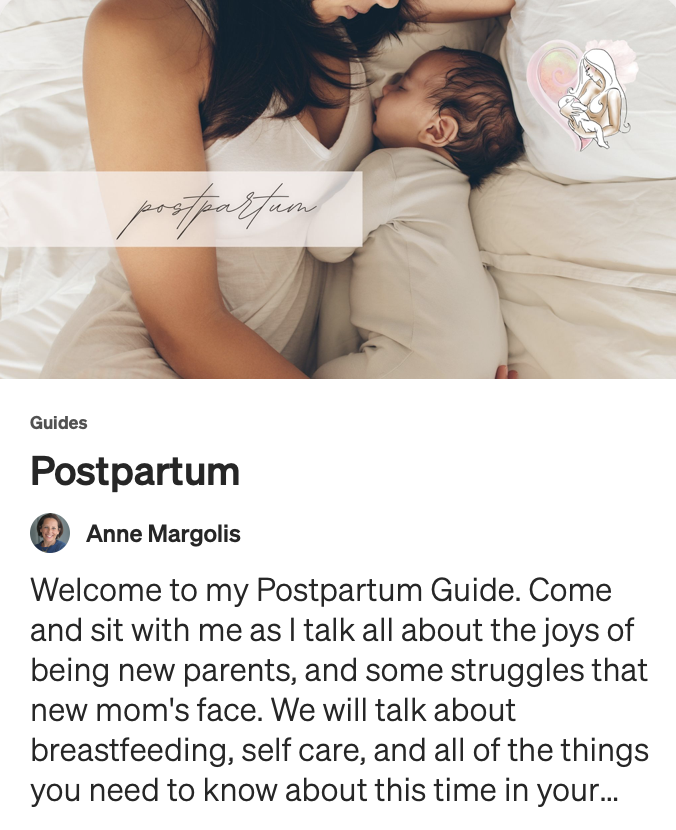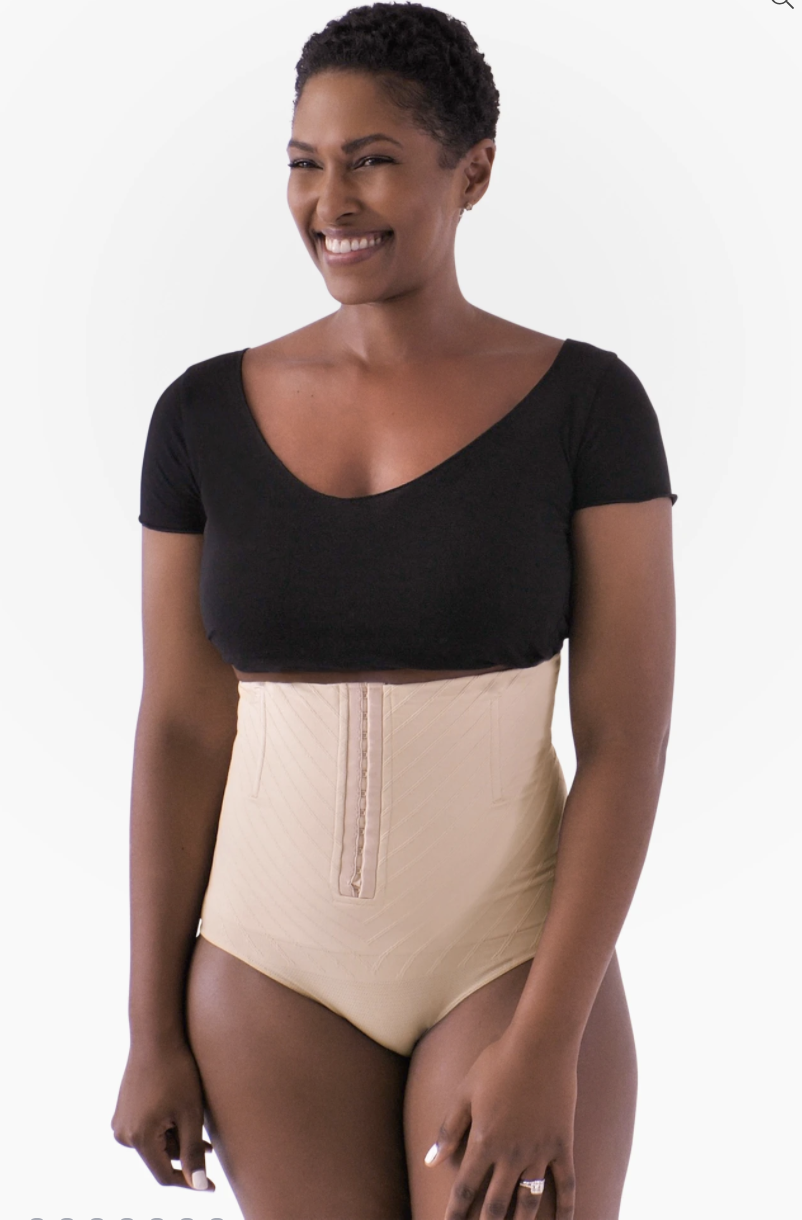POSTPARTUM CARE AT HOME: YOUR BREASTFEEDING GUIDE
Congratulations to you and your family on the birth of your baby! You did it!! You are a rockstar, superhero, however and wherever you birthed. Now it is time for some postpartum care. But through it all, do what you can to go with the flow. Tune into your body and your baby’s natural rhythms. Embrace it all as a normal healthy phase of your life as a new mama, shared with mamas around the world since the beginning of time. Try to have fun with it and keep your sense of humor.
Welcome to the postpartum period, the fourth trimester, a period of healing and adjustment, of getting to know and comfort your baby, and mastering breastfeeding. All your baby needs now is love and breast milk. If you are unable or choose not to breastfeed, consider feeding baby pumped breast milk, or donor breast milk from registered milk banks. Breast milk is the ideal food for your baby, although organic goat milk formula is most similar to human milk and you can discuss best alternative options with your pediatrician.
The rest will follow naturally, as you learn on the job, take guidance from wise experienced others, and let Baby be your teacher. As in pregnancy and birth, trust your instincts and your heart. But, do not hesitate to ask for help and support as needed. Hopefully you prepared in your pregnancy so that you are well supported during this sensitive time, as it has always taken a village to raise a baby as well as new parents. A postpartum doula is a must if you do not have family and friends to help you.
Below are some helpful hints to make the next few weeks of breastfeeding easier and more comfortable, so you are more able to heal, enjoy and reflect upon your extraordinary new miracle. The most important advice is to slow down, stay in the moment, try to resist the temptation to do, do, do...and just be, be, be. Trust that you will heal and get into your breastfeeding routine, as you are perfectly designed to do, given the proper care and support. Do not hesitate to reach out to an IBCLC lactation consultant sooner rather than later if there are breastfeeding issues beyond what your midwife or doula can help you with.
Nutrition for Postpartum Care & Breastfeeding
Maintain at least the same healthy nutrition as you did in pregnancy, especially now for recovery after birth, and during breastfeeding. This will help you to make good quality milk, and nourish your baby as well as yourself. Make sure to eat at least three whole food varied healthy meals and snacks, and even a little bit more than you would normally consume. And keep well hydrated with at least 64 ounces of water daily.
Traditional foods for the early postpartum weeks across cultures typically include soups and stews with a lot of vegetables, including the starchy ones like sweet potatoes and winter squash, stew meat or chicken, and whole grains like barley and oats. Also, do eat plenty of eggs, seasonal fruits and vegetables. Much nourishment can be added to fruit/veggie smoothies, soufflés, whole grain hot cereals, and breads/muffins like zucchini-apple, banana-date or carrot-raisin, enhanced with almond flour or chopped nuts and seeds, nut milk, and eggs.
Herbs and Supplements
Make sure to supplement your diet as in pregnancy, with herbs, vitamins, minerals, omega threes and probiotics to complete nourishment not supplied by diet alone. This will aid in your recovery and help supply all of your and your baby’s nutritional needs. Do increase iron foods and take an herbal iron, especially if you were anemic in pregnancy, have low iron stores, lost a lot of blood at birth, gave birth by cesarean, and/or are still anemic.
Do continue your nourishing pregnancy herbal infusion to your diet but add alfalfa and red clover. You can have a support person make this by:
Blending a handful of dried Nettle leaf, a handful of dried Red Raspberry leaf, a pinch of Alfalfa, large pinch of Red Clover, and several Rose Hips.
Add a pinch of Comfrey to help with healing. (optional)
Brew in a mason quart glass canning jar of boiling water 1-4 hours. The longer the brew, the stronger the taste and effect.
Strain, and drink plain or lightly sweetened with Rose Hip infused honey and/or a splash of fresh squeezed lemon or lime juice.
Enjoy hot or cold, up to 4 cups per day.
You can make it in larger quantities and store in the fridge.
There are some nice herbal breastfeeding teas like those made by Earth Mama Organics and Traditional Medicinals. Use two bags per cup of tea to get the benefits. You can have your special someone make your own delicious, nourishing combination of herbs that helps with breastfeeding and enhances the nutritional content of your breast milk:
Mix a handful each of dried Chamomile blossoms, Catnip and Blessed Thistle, a pinch each of Fennel seeds and Fenugreek powder or seeds, and a few dried Lavender flowers.
Put 1 tablespoon of the mix in a cup, fill with boiling water, and steep for 10-15 minutes.
Strain in the glass mason jar, and drink plain or lightly sweetened with Rose Hip infused honey, and a dash of anise.
Drink 1-3 cups daily.
Breastfeeding
Note ways to prepare for breastfeeding and common myths to be busted, as well as 5 essential tips to get the breastfeeding going.
Your newborn baby’s stomach is tiny, like the size of a cherry the first few days, a small apricot at one week, and a large egg at one month of age. Only tiny amounts of milk are tolerated initially. Expect your baby to drink about 1-1 ½ tsp per feed on the first day, 1½-2 ounces by one week, and 2 ½-5 ounces per feed by one month of age. This is just what you have to give.
The liquid gold colostrum that your breast produces makes no more than a few teaspoons per feed, but when your full breast milk comes in, you will have more than enough to accommodate. Often women have a misconception that they do not have enough milk when they have exactly what baby needs, and they get into a tension and supplemental feeding cycle that actually does decrease supply.
If you had labor or birth complications, needed epidural or spinal anesthesia, baby was birthed by cesarean or had to be in the intensive care, establishing breastfeeding can be more challenging at first but you can do it. Get help by a certified lactation consultant (IBCLC) as soon as possible if there is any difficulty. Baby-friendly hospitals should all have them on staff, or you can ask your midwife, pediatrician or local La Leche leader for recommendations. If you need additional guidance to boost low milk supply first follow these steps. All you may need to do is keep nice and calm with baby skin to skin and nurse more frequently, avoid formula and glucose water, and do not use pacifiers until your breastfeeding is well established.
You can increase emptying if needed, which boosts your supply, by using a double electric breast portable Willow pump every 2-2½ hours for 15-20 minutes, but know that a healthy baby is the best breast pump. If you do pump, freeze the milk for later use, like when you need to go out or want a break from a nightly feed. Take herbal combinations like More Milk Special Blend, drink non alcoholic beer or Hops tea and several cups Sesame milk daily. You may need to add increased amounts of the individual herbs like Goats Rue, Blessed Thistle and Fenugreek, 2-3 capsules each up to 3 times per day, or add the tincture of More Milk Special Blend, 2 ml 4 times per day to increase your supply.
Treating Breast Engorgement
Your breasts will begin filling with milk and can become engorged by the third or fourth postpartum day whether or not you are breastfeeding. Initially, you may notice that your breasts become larger, fuller, heavy, lumpy, slightly tender and warm. They may leak milk and you may notice a short-lived low grade fever. The skin of the breasts may be pulled tight and become shiny, hard, painful and throbbing, and the baby might be less able to grasp the nipple.
Suggestions to minimize discomfort with breastfeeding include:
Practice early, frequent breastfeeding (on demand or every 1½-3 hours) without supplemental bottles for at least the first month. The breasts will learn to replace only what baby takes. (This is a good reason not to pump significantly in addition to nursing initially, as breasts will replace that too). Allow the milk to run freely into a bottle from one breast as the baby nurses on the other side. The bottled milk can be frozen for a later nighttime feed your partner can give Baby to give you some needed sleep once engorgement resolves.
If Baby is having a hard time latching, try manually hand expressing a small amount of milk before nursing. You can also do so afterwards if still uncomfortably full after each feeding.
Rub Arnica oil gently over breasts, except nipples, then apply a comfortably hot washcloth/compress or stand under a warm shower 5-10 minutes before nursing.
Gently massage breasts downward while nursing using Arnica massage oil or lotion.
If you are uncomfortable between feedings, you can let comfortably hot shower water run over your breasts and massage them downwards using a fine tooth comb dipped in soap, or gently hand express just a small amount, or soak your breasts into a sink full of comfortably hot water. If engorgement is severe add 1-2 ounces of Marshmallow root tincture to the water.
For severe engorgement, apply cold packs just during the short term period of extreme discomfort. Ideally, make these by defrosting frozen cabbage leaves rolled over with a rolling pin.
Apply cold compresses of Comfrey (soak washcloths with the tincture and store in the fridge). You can try comfortably hot Comfrey compresses and add Parsley tincture.
If you are not nursing and need help drying up your breastmilk, drink lots of Sage tea and do not pump.
Report any areas of increased heat, redness, swelling and severe pain; fever over 100.4 after the first few days; and chills, headache and generalized aches like you have the flu.
Sore Nipples
Your nipples may be tender or downright sore during the first week or so of getting accustomed to breastfeeding your baby, whether you are a first time mom or have nursed successfully before. You may also feel some pain, usually lasting no longer than one minute, each time the baby latches onto the breast in these early weeks, which lessens as baby nurses. If your baby is improperly sucking, or incorrectly positioned, your nipples can become very sore and the pain is intense the entire feed.
Suggestions to minimize nipple soreness are:
Remember this pain is temporary as your nipples adjust to normal healthy breastfeeding, and use your tools from labor and breathwork to breathe and relax into the sensations rather than to fight them. This actually helps tremendously.
Have an experienced person observe for proper positioning, latch and sucking during breastfeeding from the beginning, especially if you have severe nipple pain during the entire feed and your nipples are very sore.
Release the baby’s suction with your finger before removing the nipple from the baby’s mouth anytime you need to stop the sucking, especially when the latch is shallow.
Soak nipples in a cup of 0.9% physiologic saline solution, then expose breasts to fresh air 20 minutes after each feeding, ideally in the sun, in front of a 60 watt light bulb, or a blow dryer. Yes, spend some time topless.
Apply some breast milk to the nipple.
Avoid synthetic breast creams and nipple shields.
If mild, massage plain organic Cocoa Butter, Almond oil or Vitamin E onto the nipples after each feeding. If without relief, apply homeopathic calendula cream or herbal salve made with Calendula, Marshmallow, Aloe Vera, and Chamomile, or Lanolin designed for sore nipples after each feed and gently remove any residue before nursing. Apply pure Aloe Vera gel to the cracks and cuts, as well as Comfrey, but wipe off before nursing so baby does not ingest it. Try several formulas and see what feels best for you.
Nurse more frequently for shorter periods of time.
Alternate positions of nursing each feeding to vary pressure points on the nipple.
Initiate nursing on the least sore side. You can nurse only one breast a day to allow the other to heal, pumping the sore breast to relieve engorgement during each nursing session. Then nurse the alternate breast the next day (pumping the other), and continue this until nipples have recovered.
Take a daily bath or shower, washing nipples with water only (no soap).
Wear all cotton bras, avoid tight bras, and minimize the use of breast pads. If breast pads are occasionally needed, use organic bamboo or cotton washables or nontoxic disposable breast pads without plastic, changing when wet to keep nipples dry.
Report to your practitioner if your soreness lasts longer than a week or is getting worse, if your nipples are cracked and bleeding, or severe nipple pain persists during entire feed indicating a latch issue.
Need more help from me?
Check out my insider’s Guide to the joys and challenges of recovering from birth and getting the breastfeeding in these modern times created by a seasoned holistic nurse midwife who has seen everything! Learn simple tricks of the trade to make the journey to motherhood more holistically healthy and fulfilling.
You will have direct access to me through the Guides and I can help you:
Help yourself breastfeed healthfully and successfully
Get the support and guidance you need to answer all of your questions to create a breastfeeding experience you love and treasure forever
Understand holistic modalities on breastfeeding issues
Get the support and tools you need for stress reduction
Answer questions and make informed decisions
BUY NOW!
Give yourself this gift a lifetime to have the experience of your dreams, you will treasure forever.
If you need more personal guidance, schedule a consultation with me.
My Natural Birth Secrets book 2nd edition has helpful tips as well, and is an excellent resource in adjunct to the Guide.























